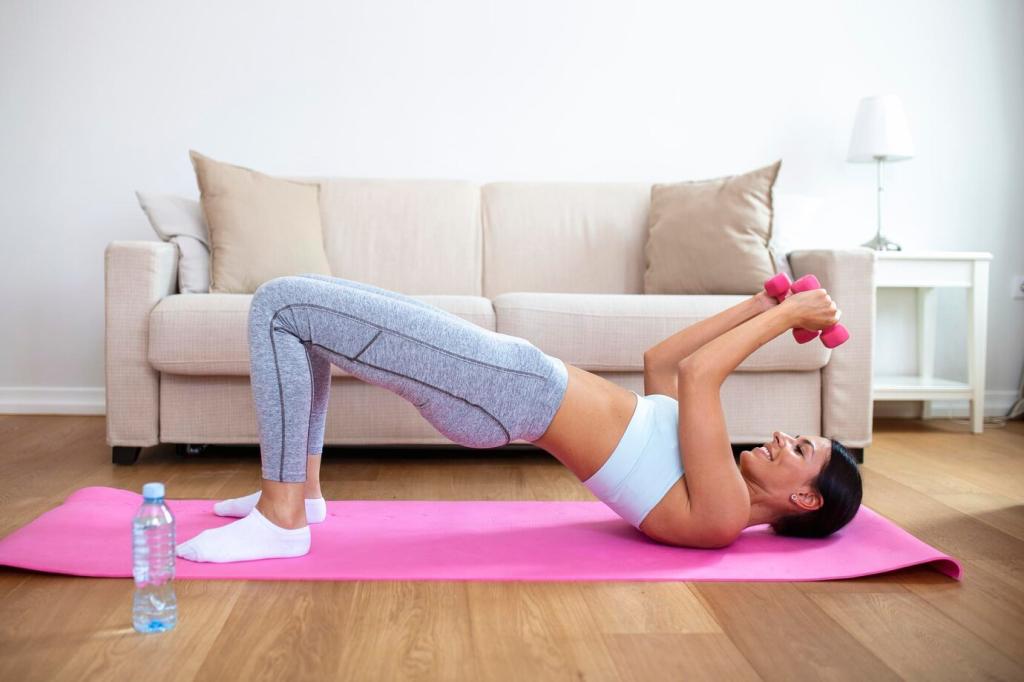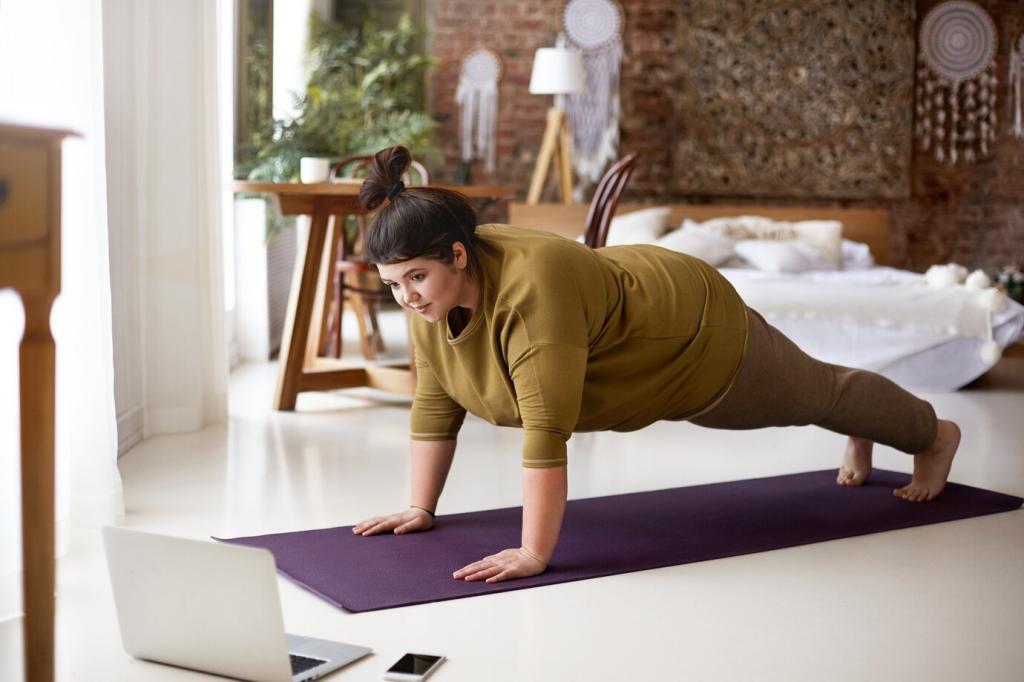
Start Strong: Essential Components of an Effective Beginner Fitness Plan
Chosen theme: Essential Components of an Effective Beginner Fitness Plan. Begin with clarity, kindness, and a plan you can actually keep. We’ll guide your first steps, celebrate small wins, and help you build momentum. Subscribe and share your first goal to join our supportive starter community.
Find Your Why and Set SMART Beginner Goals
Write the real reason you want to get fitter: more energy for your kids, steadier mood, stronger back. When your motivation feels personal and vivid, showing up becomes simpler. Share your Why in the comments to inspire others.
Simple Baseline Checks and Honest Tracking
Try a 1-minute step test, a comfortable plank hold, and max easy push-ups with perfect form. Note how you feel, not just numbers. If you have medical concerns, consult your clinician before beginning these simple assessments.
Simple Baseline Checks and Honest Tracking
Use your notes app: date, session type, duration, perceived effort, and one emotion. Consistent notes transform vague impressions into proof that you are improving. Comment below if you want a simple template you can copy.

The Weekly Plan Blueprint: FITT and Gentle Progression
Aim for three full-body strength sessions and two low-impact cardio days, plus two active rest days. The World Health Organization suggests 150 minutes of moderate activity weekly; you can accumulate that with short, consistent efforts.

The Weekly Plan Blueprint: FITT and Gentle Progression
Use the talk test or Rate of Perceived Exertion: most sessions at RPE 3–7, where conversation is possible. Let your breathing guide you. Small, gradual increases beat dramatic jumps that invite fatigue or injury.
Beginner Strength: Build Skill Before Load
The Five Foundational Patterns
Train squat, hinge, push, pull, and carry. These patterns improve daily life, from lifting groceries to climbing stairs. Maya, 42, practiced them thrice weekly and reported steadier energy within six weeks—before adding any heavy weights.
Technique First, Always
Use boxes, benches, or walls for safe depth and balance. Slow the lowering phase, keep a proud chest, and film one angle for feedback. Mastery at light loads prevents plateaus and supports sustainable, joint-friendly progress.
A Simple Full-Body Template
Perform two to three sets of eight to twelve reps: goblet squat, hip hinge, vertical press, row, and a carry. Rest sixty to ninety seconds. When all sets feel solid, add one rep or a tiny weight increase next session.
Choose Joyful Modalities
Pick what feels good now: brisk walking, cycling, elliptical, or swimming. Use the talk test to stay comfortable. Ken stayed consistent by turning dog walks into intervals, missing zero sessions for a month without feeling overwhelmed.
Gentle Intervals and Zone Two
Alternate two minutes easy, one minute purposeful for fifteen to twenty minutes. Most work should feel like Zone Two—steady conversation possible. Accumulate minutes across the week rather than chasing a single long, draining session.
Recovery-Focused Finish
Cool down with slow breathing and easy strides. Sprinkle in ten-minute movement snacks on busy days. Share your favorite neighborhood loop or playlist below to help another beginner discover a routine they enjoy.
Mobility and Injury Prevention from Day One
Daily Five-Minute Mobility
Try cat-cow, ankle rocks, thoracic openers, hip flexor stretch, and controlled shoulder circles. These moves support squats, hinges, and presses, while easing desk tension. Consistency matters more than intensity at this stage.
Warm-Up and Cool-Down Recipe
Warm up with light cardio, dynamic leg swings, and practice sets. Cool down with nasal breathing and gentle stretches. This routine readies joints, improves performance, and signals your nervous system to recover effectively afterward.
Pain Rules and Regressions
Sharp pain means stop, adjust the range, or swap the exercise. Use partial reps, lighter loads, or more support. Persistent discomfort warrants professional guidance. Share any sticking point so we can propose beginner-friendly alternatives.
Recovery, Nutrition, and Habit Consistency
Aim for seven to nine hours in a cool, dark room. Morning light, a consistent bedtime, and mindful caffeine timing improve recovery. Leila’s first strength milestone arrived only after she fixed her wind-down routine.
Build plates with a palm of protein, a fist of colorful produce, a cupped hand of carbs, and a thumb of healthy fats. Hydrate regularly. Eat a light snack if training fasted feels rough, and listen to your body’s cues.
Attach workouts to existing routines: after coffee, take a ten-minute walk; after work, do a simple circuit. Use calendar checkmarks and forgiving resets. Subscribe, then comment your anchor habit so others can borrow your strategy.
